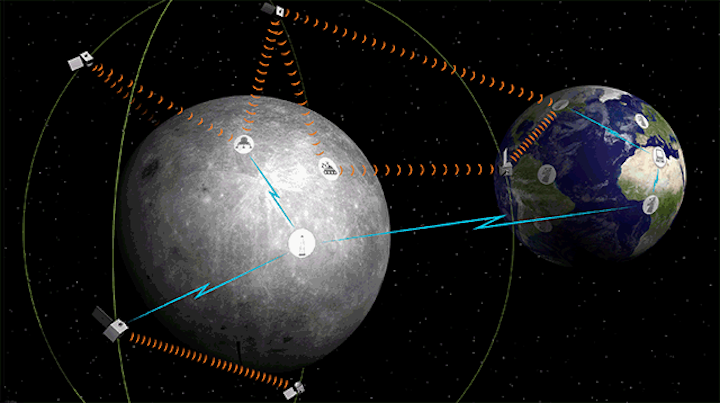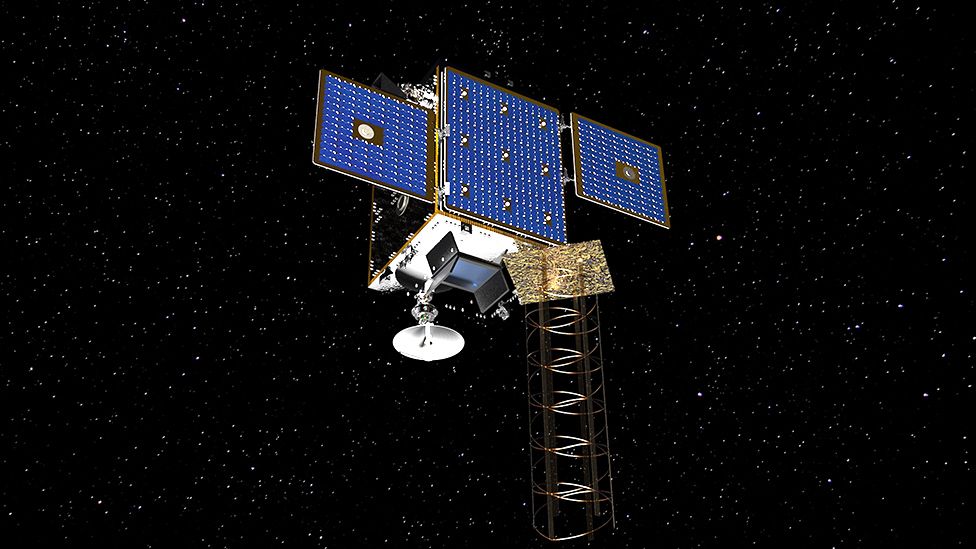22.05.2021

The European Space Agency is proposing a precise navigation system at the Moon, much like the sat-nav technology we have here on Earth.
It would enable spacecraft and astronauts to know exactly where they are when moving around the lunar body and to land with precision.
The initiative, known as Moonlight, would also incorporate a telecommunications function.
A large flotilla of lunar missions will be launched this decade.
Chief among them will be the US space agency-led successor to Apollo. Called Project Artemis, this will put crews on the Moon for the first time in more than 50 years.
"We are entering a new phase - the systematic exploration of our 'eighth continent', the Moon," said David Parker, the director of human and robotic exploration at Esa.
"The Moon is a repository of 4.5 billion years of Solar System history, but we've hardly begun to unlock its secrets. And so Moonlight is something that we see as really exciting, as a necessary infrastructure to support sustained exploration."

Esa is asking two industrial consortia in Europe to define what an integrated sat-nav and telecoms system at the Moon would look like.
It'll include a constellation of at least three, but probably more, positioning-and-relay satellites to give global coverage, and will likely include some surface beacons, too, to augment the accuracy of the navigation signals.
"The target we have at the moment is that the constellation would be able to allow for an accuracy of 100m and probably better. We think we are able to get to 30m in the first instance," explained Paul Verhoef, the director of Esa's navigation department.
Moonlight is just at the feasibility stage at the moment - what is known in industry-speak as a Phase A/B1 study.
The consortia will put their thinking on the technologies required in reports to Esa, who will then produce a defined and costed proposal to go before Europe's research ministers when they gather for their triennial council meeting next year.
One consortium will be led by the UK small satellite manufacturer, Surrey Satellite Technology Limited. SSTL assembled the navigation payloads on the European Union's Galileo sat-nav system.
 IMAGE COPYRIGHTTELESPAZIO
IMAGE COPYRIGHTTELESPAZIOThe other group will be fronted by the Italian space systems company Telespazio. One of its team-members is London-based Inmarsat, which is a world leader in satellite telecommunications for on-the-move applications, such as in ships and planes.
For those nations and companies thinking of sending spacecraft to the Moon this decade, having access to the proposed Esa network would help de-risk their ventures and reduce their cost.
And it would make the remote operation from Earth of, say, rovers and telescopes on the far-side of the Moon a lot easier because the system would bring very high data rates back to Earth.
"There is a full landscape of possibilities that you can imagine now: An astronomer could set up observatories on the far side of the Moon; rovers could travel more speedily on the lunar surface; and as we have all now become accustomed to virtual meetings - who knows, we could be doing Skype on the Moon," speculated Elodie Viau, Esa's director of telecoms.
The expectation is that Esa will pursue a commercial model for the constellation, which is to say it will buy a service from an operator rather than own the system or any of the hardware.
"I think that's the way it will go," commented Nick Shave, vice president of strategic programmes at Inmarsat. "Esa will run it from a service-based perspective and leave a level of risk with the consortium. That's why it's really important now that we establish the business case and get the income model right."
 IMAGE COPYRIGHTSSTL
IMAGE COPYRIGHTSSTLIf this is the way it's done, all manner of customers - from private entities to the big space agencies, such as Esa and Nasa - will need to see the utility of contracting out their sat-nav and data-relay needs.
Certainly, this seems to fit with the current direction of travel. Nasa is purchasing cargo-delivery and even crew-landing services from commercial providers as part of its Artemis project.
And Esa, too, has started down this road by giving a telecoms service contract to SSTL for its Lunar Pathfinder satellite, which can be seen as a kind of prototype for Moonlight. Indeed, it will test receiver technology that can be used to fix a position in space.
The production of Pathfinder is being self-financed by the Guildford-based company. And when it's flying in 2023/24, it will sell its relay service to any and all who want to use it.
The plan is to put Pathfinder into a highly elliptical orbit so that it can have long periods of visibility over the Moon's South Pole - the planned destination of early Artemis missions.
"Pathfinder is important for us because it will sound out the market," said Nelly Offord, the head of business for exploration at SSTL.
"When you're looking to commercialise something, it's much easier to start on a smaller scale with one spacecraft, to make sure the service is right for communication.
"Pathfinder will also be able to interact with the future constellation. So, if you like, it will sort of become the first node of the constellation."
Quelle: BBC

